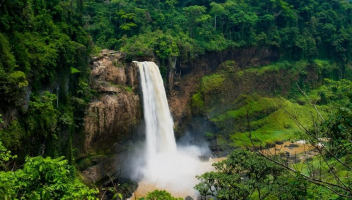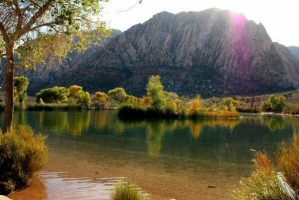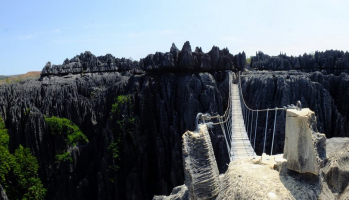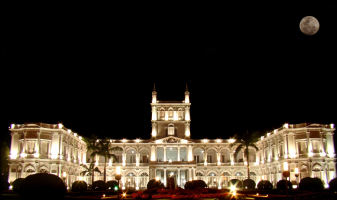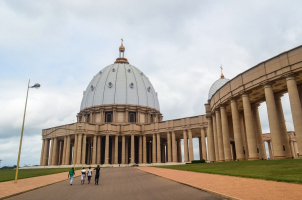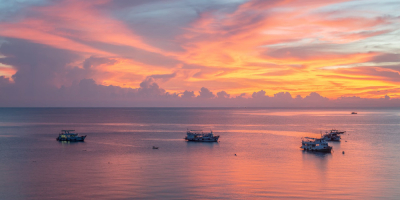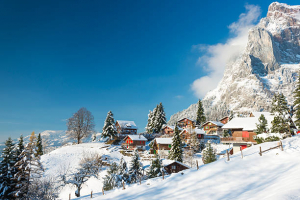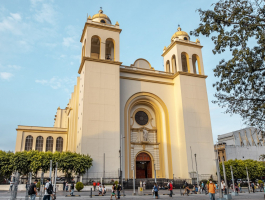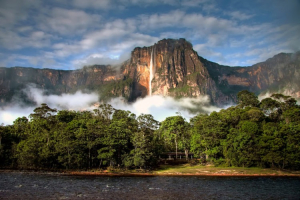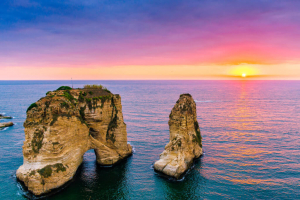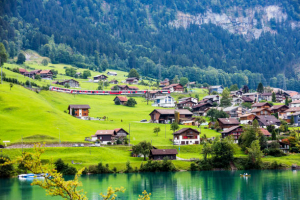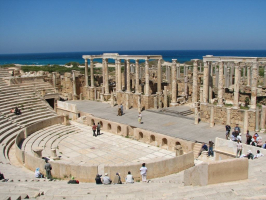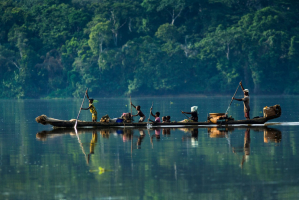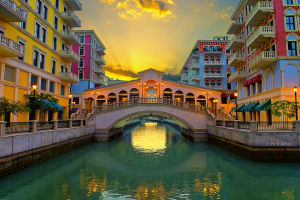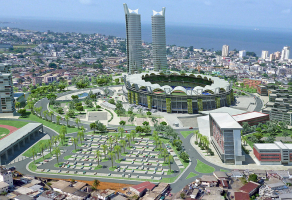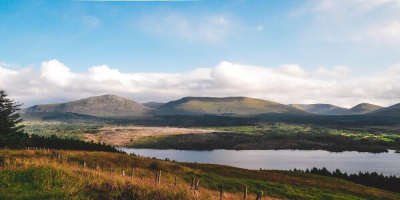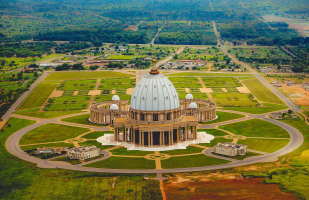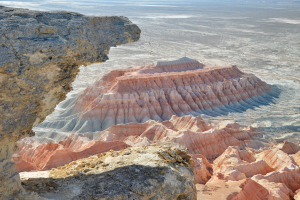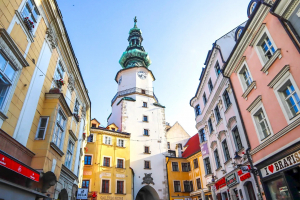Top 8 Best Places to Visit in Saudi Arabia
Saudi Arabia's beautiful places aren't yet as well-known as they deserve to be. These are the attractions you must visit in Saudi Arabia, from massive desert ... read more...tombs and epic canyons to white-sand atolls and evocative old cities. Here are eight places you must visit.
-
Wadi Al Disah is a mountainous location in Saudi Arabia's Tabuk Province in the southwest. Tabuk is about 4000 square meters away. The Prince Mohammed bin Salman Natural Reserve encompasses the majority of Wadi Al Disah. The climate in the area is warm in the summer and mild in the winter, making it an ideal location for planting. Many ancient remains dating back to the Nabateen era can be found in the settlement of Disah. Because Al Disah has so many old structures, many of them have Arabic lettering on them.
The Al Disah Valley, near Tabuk in the country's north, is like an otherworldly mix of the Grand Canyon and Monument Valley - an epic collection of sandstone columns in a wide hollow, where the dusty amber desert is broken up by a valley of swaying high grasses and palm trees. Make sure to be here when the light casts an ethereal glow over the sculptural rock formations, whether you arrive on foot or by four-wheel-drive. The Public Investment Fund (PIF) has begun a development project to improve Wadi Al Disah and prepare it for local and international tourists in order to boost tourism in Saudi Arabia. The project aims to develop the area of Saudi Arabia's most environmentally diverse destination.
Location: Tabuk, Saudi Arabia's northwestern
Entrance fee: N/A
Best time to visit: Winter
Hours: N/A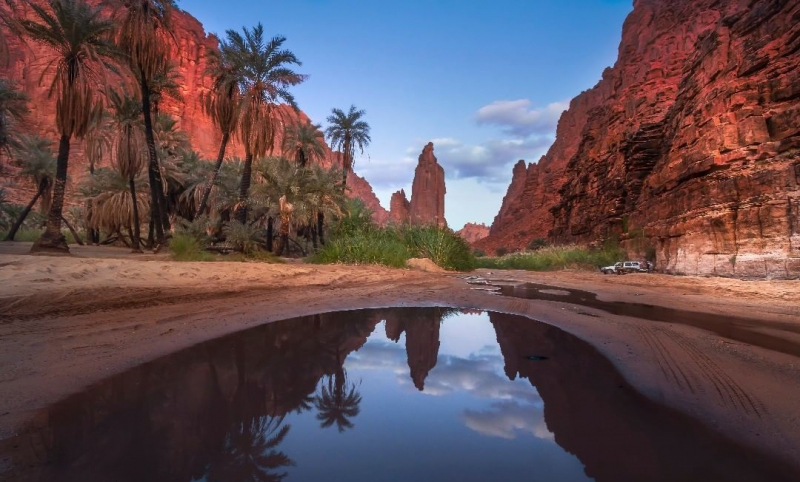
https://www.instagram.com/najeep7assan/ 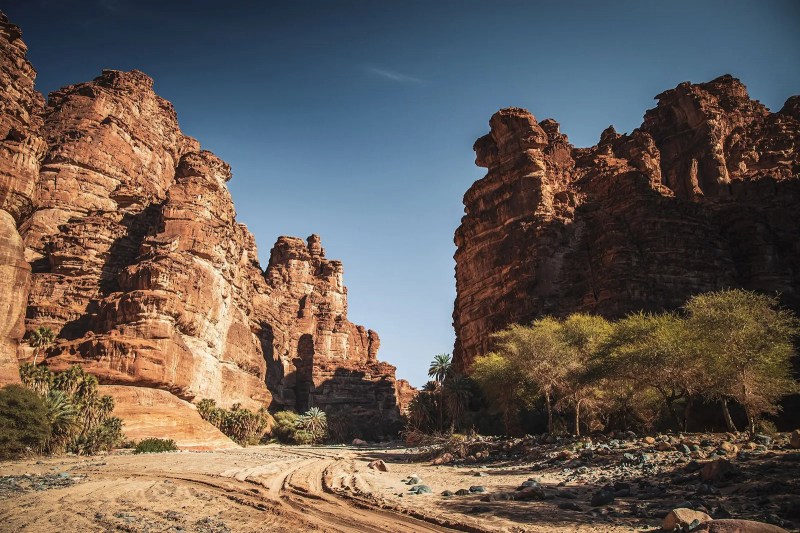
https://www.cntraveller.com/ -
Hegra, also known as Mada'in Salih by Muslims, is an archaeological site located in the Al-Ula district of Medina Province in the Hejaz, Saudi Arabia. The majority of the relics are from the Kingdom of Nabataea (1st century AD). After Petra, the kingdom's capital city, the site serves as the kingdom's southernmost settlement and second-largest metropolis. Mada'in Salih was designated as a patrimony site by UNESCO in 2008, making it Saudi Arabia's first World Heritage Site. It was chosen for its well-preserved ruins from late antiquity, particularly the 131 colossal rock-cut tombs of the Nabataean Kingdom, with their artistically adorned facades.
The extremely large rock-cut tombs hung in the gorgeous desert at Hegra, near Al Ula in the kingdom's center, are among the most recognized sites in Saudi Arabia. However, whereas Petra receives over a million visitors each year, Hegra is still largely unknown, attracting more wildlife than tourists. That could change in the coming years, with hotel brands such as Aman, Banyan Tree, and Tulum-born Habitas establishing eco- and heritage-sensitive camps around what could be one of the main attractions of the 2020s.
Location: Al Madinah Region, Al-Hejaz, Saudi Arabia
Entrance fee: N/A
Best time to visit: afternoon around 3 pm
Hours: Mondays - Sundays: 9:00 am - 5:30 pm (last entry is 3:00 pm)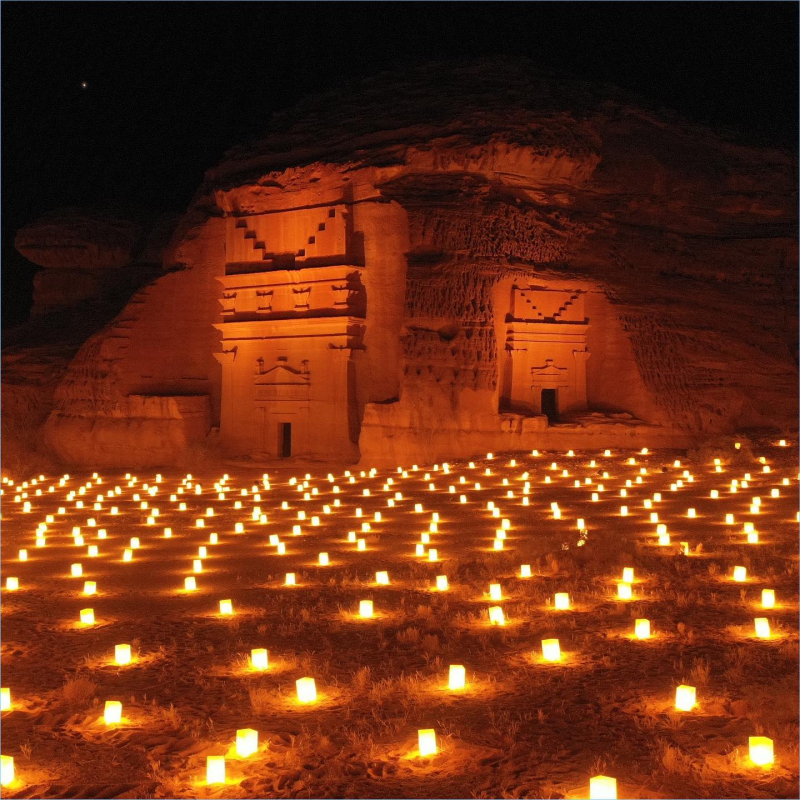
https://www.instagram.com/experiencealula/ 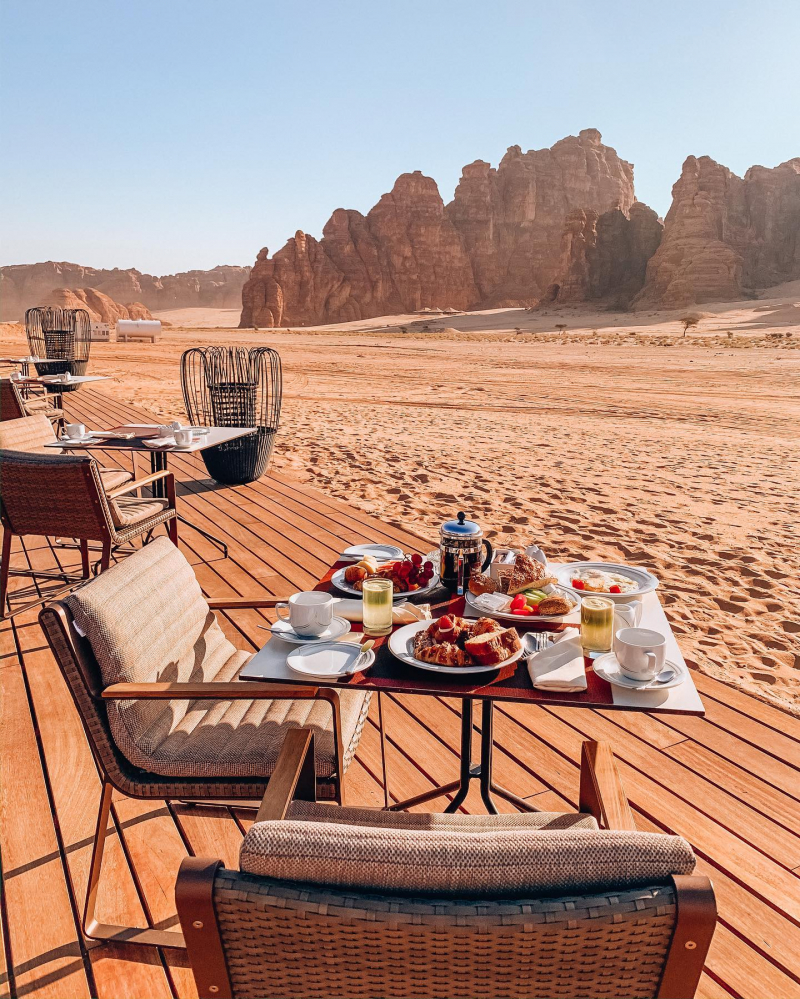
https://www.instagram.com/waelalteen/ -
Umluj is a small town in Saudi Arabia's northwest, 150 kilometers north of Yanbu and adjacent to the Red Sea. It's a veritable haven for nature enthusiasts, outdoor adventurers, and those interested in health, wellbeing, and unique cultural encounters.
It's easy to see why this tranquil seaside town and region is often referred to as Saudi Arabia's Maldives. 104 atolls are spread throughout a section of the Red Sea that is unmistakably turquoise to the north of the town. An island-hopping trip is a must-do Umluj activity, with dolphins spotted along the route to outcrops like Jabal Hassan where you may snorkel, fish, or relax on white sandbars, becoming as peaceful as the dugongs and hawksbill turtles that swim about these islets. This is also a world-class diving region, much quieter than the Red Sea hotspots like Sharm El Sheikh but with a technicolor treasure of 1,200 fish species and 300 coral kinds, four times as numerous as the Caribbean. On a few islands, sustainable resorts are being built, but the majority of the area is a thrillingly unspoiled natural aquarium.
Location: Umluj, the Northwest of Saudi Arabia
Entrance fee: N/A
Best time to visit: between January and June.
Hours: N/A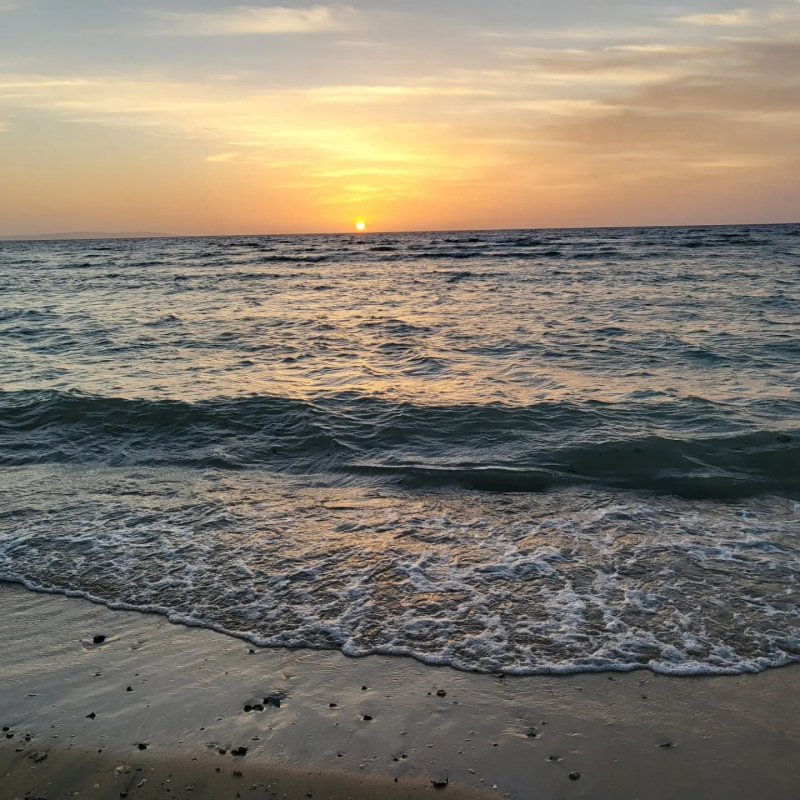
https://www.instagram.com/sodong2/ 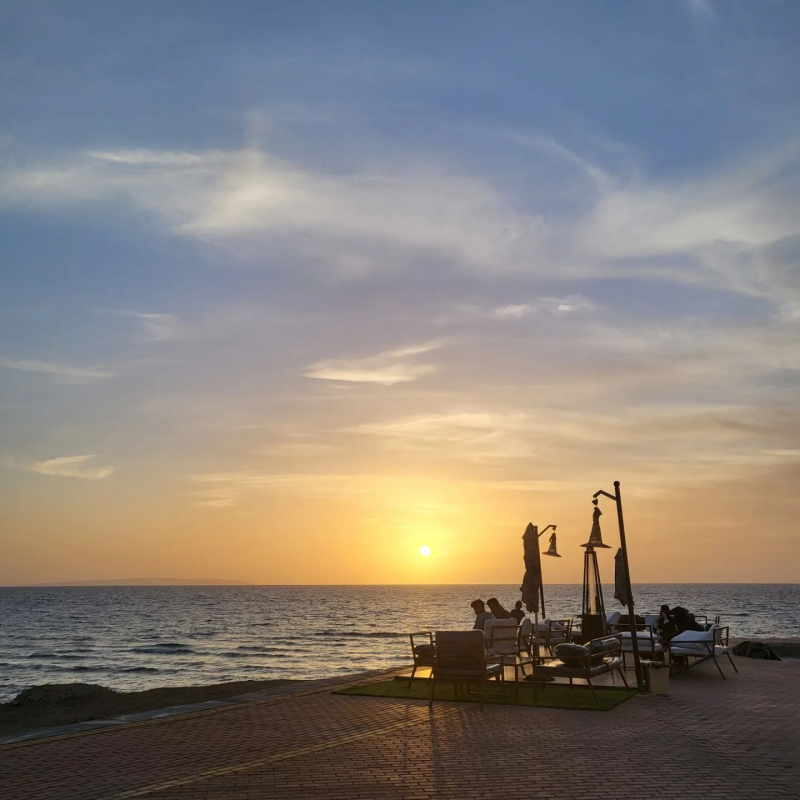
https://www.instagram.com/sodong2/ -
Al-Balad is the historical district of Jeddah, Saudi Arabia's second-largest city. Al-Balad, which dates back to the 7th century, was once the heart of Jeddah. Many Saudi cities include a historic neighborhood known as Al Balad, which is characterized by the aroma of exotic spices and the melodious call to prayer. The most evocative of all is Balad in Jeddah, Saudi Arabia's cosmopolitan harbor city — a maze of narrow passageways connecting historic coral-stone merchants' houses, home to oud dealers, clove-scented traditional bakeries, and the large, dazzling Souq Al Alawi.
Many of the area's massive, crumbling palaces have been meticulously renovated since it was recognized as a UNESCO World Heritage site in 2014, including the grand 106-room Nasseef House – now a museum and cultural hub featuring art and photography exhibitions as well as academic lectures. Furthermore, galleries, mangour wood-crafting studios, and hip cafés are reviving once-dormant structures, offering an area founded in the seventh century a bright future.
Location: Al Balad, Jeddah, Saudi Arabia
Entrance fee: N/A
Best time to visit: Sunset and after the first evening prayer
Hours: Mondays - Sundays: 9: 00 am - 23:59 pm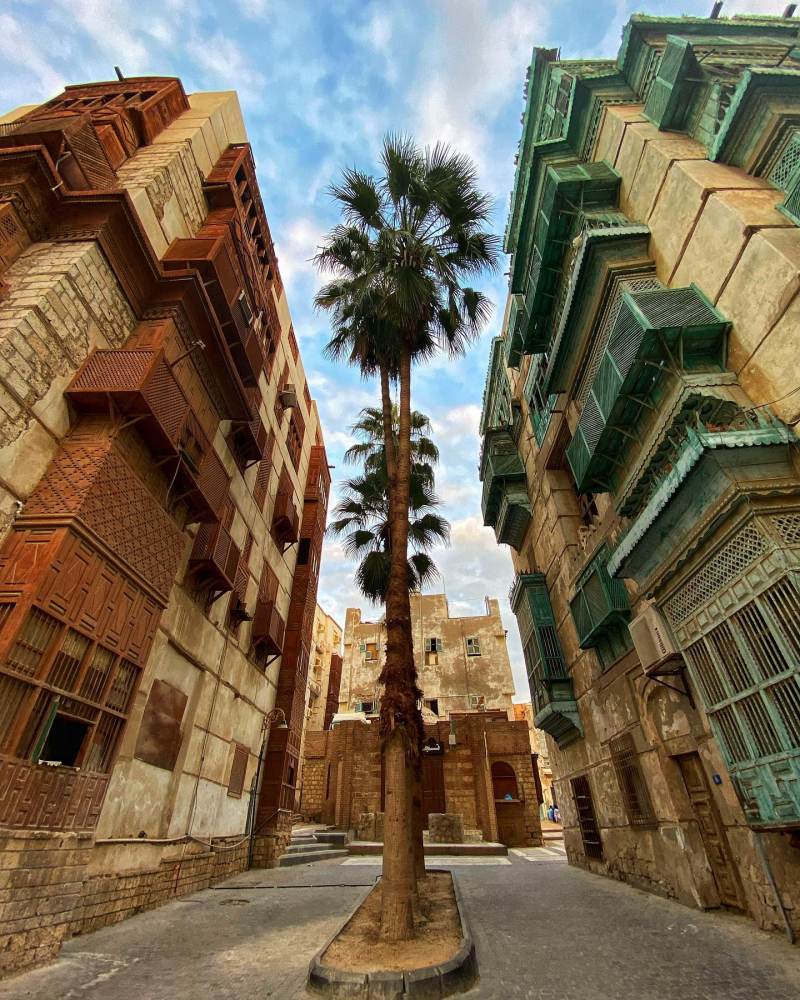
https://www.instagram.com/har.orio/ 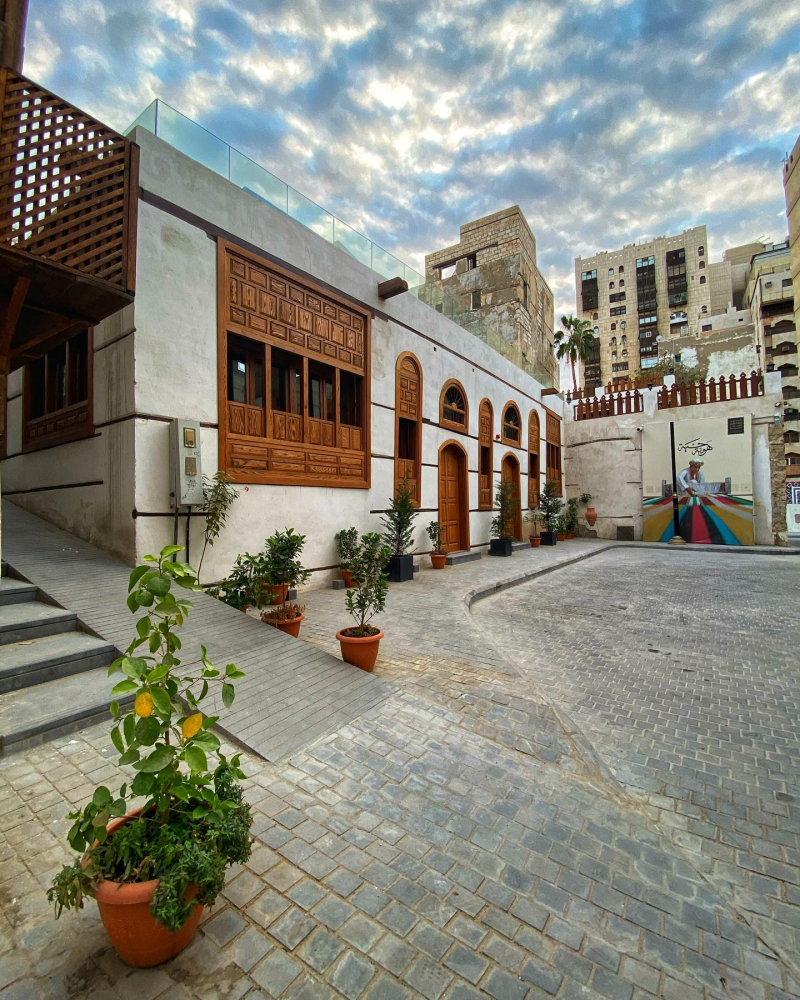
https://www.instagram.com/har.orio/ -
One of Saudi Arabia's most renowned tourist spots, The Edge of the World (actual name: Jebel Fihrayn), earned its name from the unbroken view of the horizon it provides from its 300-meter-high cliffs that overlook the surrounding plain. It's a 305-meter plummet into an ancient ocean bed that's part of the much longer Tuwaiq escarpment. You can see dried rivers flowing across the country from the tops of the cliffs, and you could even see camels moving far below – an ancient caravan route formerly traveled through these grounds. The drive from Riyadh to the Edge of the World takes roughly 90 minutes.
The Jebel Fihrayn, located just west of Riyadh, is another fittingly called natural wonder - a massive striated sandstone wall that rises unexpectedly from the reddish plain of an ancient ocean bed. The peak offers an unbroken view across the barren country, where wild camels can still be seen meandering along ancient caravan routes and is best accessible by four-wheel-drive. Hikers can take a variety of paths to the summit, although good walking shoes are required due to the harsh terrain, steep slopes, and jagged rocks. The Edge of the World is so popular that local authorities have built a road leading to the site's gates. The Sha'ib Kharmah, a huge valley that becomes lush and green during the rainy season (November to April), is a wonderful area for a picnic. The valley stretches for about 15 kilometers west until it reaches the base of the huge cliffs that form the Edge of the World.
Location: the Northwest of Riyadh, Saudi Arabia
Entrance fee: N/ARiyadh Hiking's price: 250 – 300 SAR/person
Best time to visit: fall and winter months
Hours: N/A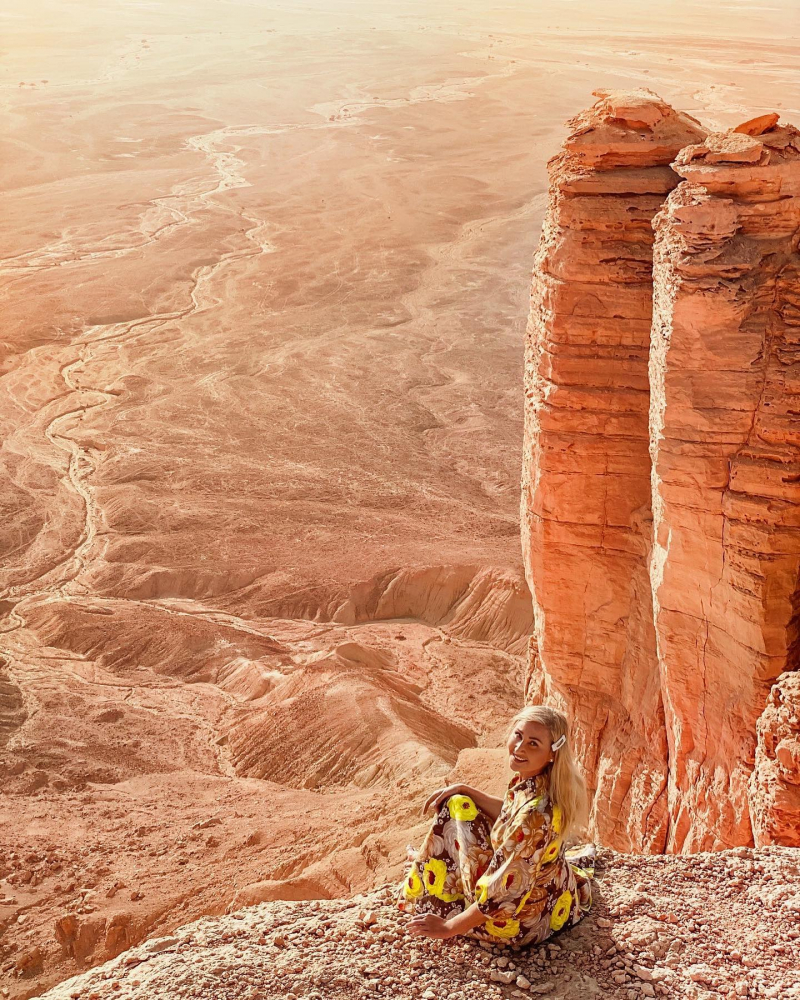
https://www.instagram.com/eglita/ 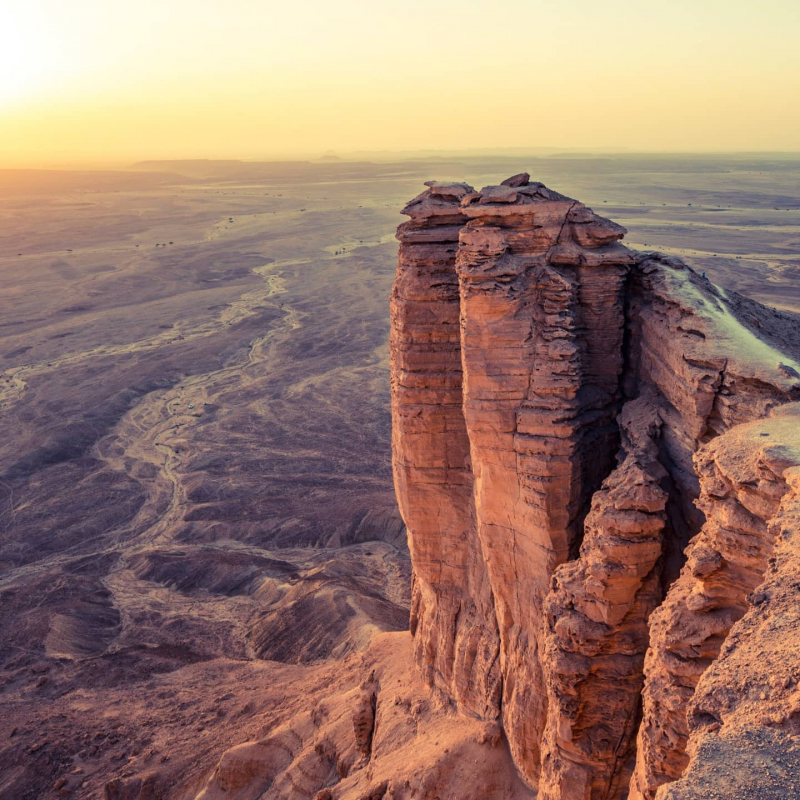
https://www.instagram.com/jakepham/ -
Diriyah, also known as Dereyeh and Dariyya, is a Saudi Arabian town on the outskirts of the Saudi capital, Riyadh. Diriyah was the birthplace of the Saudi royal family and the capital of the Emirate of Diriyah from 1744 until 1818 when the first Saudi dynasty reigned. Today, the town serves as the administrative center of the Diriyah Governorate, which comprises the villages of Uyayna, Jubayla, and Al-Ammariyyah, among others, and is located inside the Ar Riyad Province.
The ancient desert city of Diriyah, situated in the verdant oasis of Wadi Hanifa just outside Riyadh, is one of the most spectacular sights in the kingdom. It was formerly a cultural hotspot, a historic crossroads for pilgrims and commerce over the centuries, and the royal dynasty's ancestral seat. Today, museums in Diriyah, such as the magnificent Salwa Palace, dive into the citadel's illustrious past. Restaurants and coffee shops dotted around its beautiful mud-brick architecture and bordering its palm-fringed avenues, bow to heritage with Najdi meals such gereesh bil laban, cracked wheat cooked in a yogurt sauce.
Location: Ar Riyad Province, Saudi Arabia
Entrance fee: free
Best time to visit: mid-afternoon - after the sunset
Hours: Mondays - Sundays: 24 hours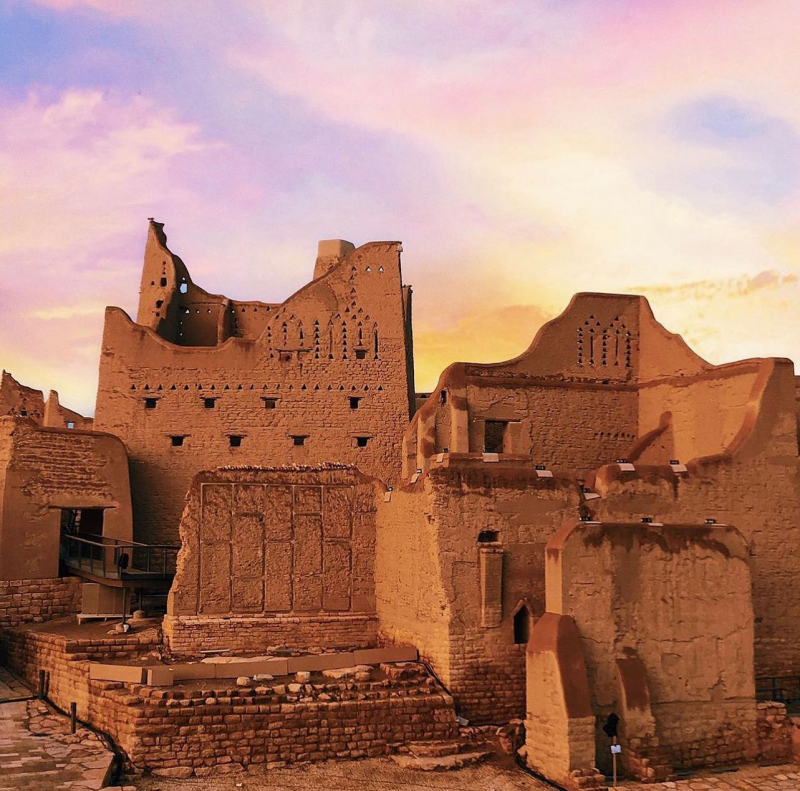
https://www.instagram.com/welcomesaudi/ 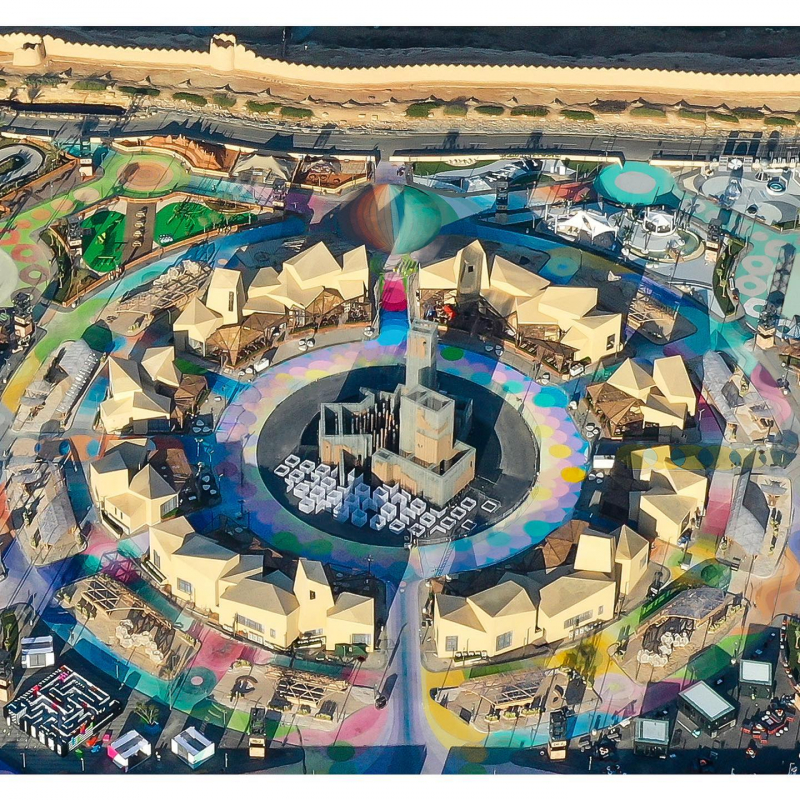
https://www.instagram.com/designlabexperience/ -
The Al Qarah Jabal mountain, also known as Al-shaba'an mountain, is a mountain in Al ahsa, Saudi Arabia, positioned between At-Tuwaitheer and Al-Qarah villages. This mountain, which is 15 kilometers east of Al hofuf, is one of the most notable natural attractions in Al-Ahsa and was added to the UNESCO world heritage list in 2018, after the addition of Al-Ahsa oasis. The mountain has caves, and some of them, such as the Al-Nashab cave, have a moderate year-round temperature.
Despite its raw beauty, Al Qarah, which brushes the eastern side of the Shadqam plateau, is one of the kingdom's lesser-known attractions. From the summit of Al Qarah mountain, which rises 670 feet above sea level, you can see a magnificent length of sand-blasted caverns and gorges built over millennia. Climb its limestone cliffs for amazing panoramic views, accented by a maze of honeycomb tunnels, nooks, and passageways to explore along the way. The names of places in this region indicate strong respect for nature and the factors that have created the region's character and traditions as thoroughly as its scenery. The name Al Ahsa means murmuring streams, while Hofuf means whistling wind. Palm-tree farms and charming villages encircle the mountains, providing a shady haven with their maze of handmade shops and restaurants.
Location: Al-ahsa, the Eastern Province, Saudi Arabia
Entrance fee: SAR 50
Best time to visit: In the morning
Hours:- Mondays - Fridays: 8:00 am - 9:00 pm
- Saturdays & Sundays: 8:00 am - 10:00 pm
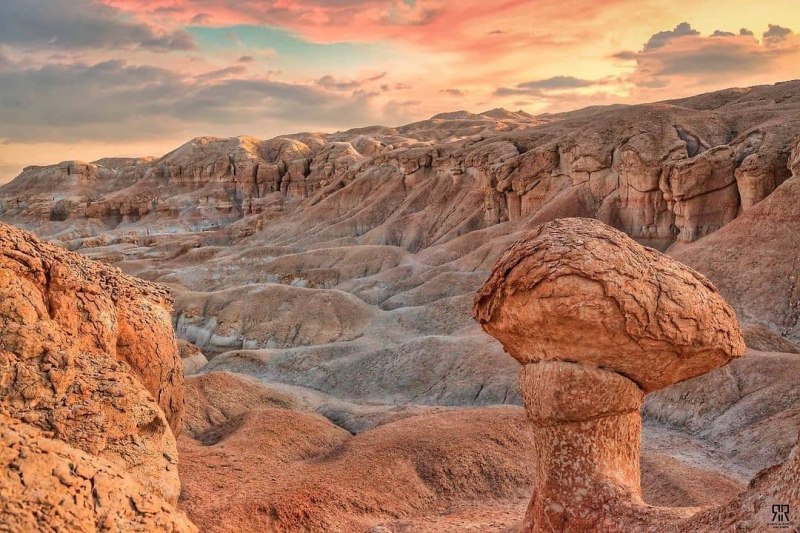
https://www.instagram.com/saudi.images/ 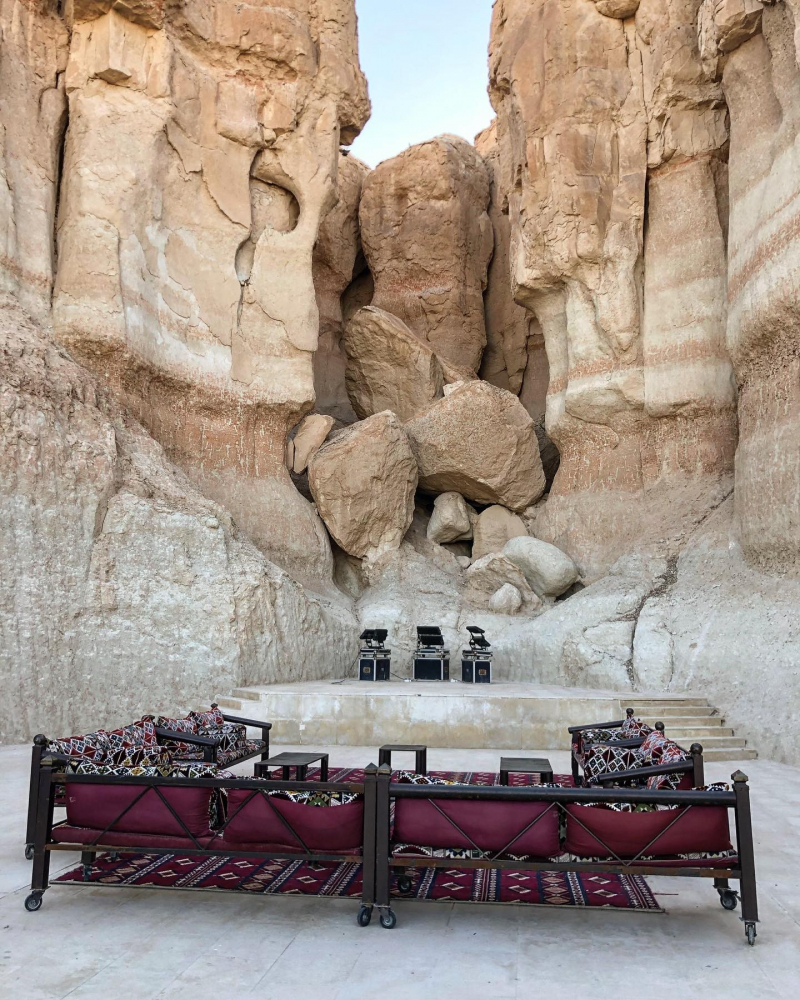
https://www.instagram.com/hallawalla2022/ - Mondays - Fridays: 8:00 am - 9:00 pm
-
Rijal Almaa is a village in the Rijal Almaa province of Saudi Arabia's Asir Region. It's roughly 50 kilometers west of Abha in Saudi Arabia's southwest. The village dates back over 900 years. Rijal Almaa is made up of around 60 multi-story structures composed of stone, clay, and wood. The town is historically significant due to the presence of several long and old strongholds. The village is open to visitors and may be reached via Sawda Center, Aqabat Sama, Muhayil Asir, and Hobail.
Rijal Almaa is known as the Gingerbread Village, sits deep within lush, verdant surroundings, and has long been a draw for visitors seeking rich culture and history. The Flowerman Festival, held in August, is a celebration of the Qahtan tribe, which is well recognized for the vivid clothes and floral crowns worn by males and celebrated by the majority of the residents.
The village features a number of structures with multiple stories, some of which reach up to eight, that are formed of stone and have colored wooden windows. They also include inscriptions found on the inside walls of rooms. The technique used in these inscriptions is known as "Al-Qatt art", in which village women usually place harmonizing shapes and colors. There are several wooden seats and prepared mats in the exterior courtyards of the houses, as well as green, white, yellow, and red shapes on the windows and wooden doors.
Location: Rijal Almaa province, Asir Region, Saudi Arabia
Entrance fee: SAR 20
Best time to visit: N/A
Hours: 07:00 am- 20:00 pm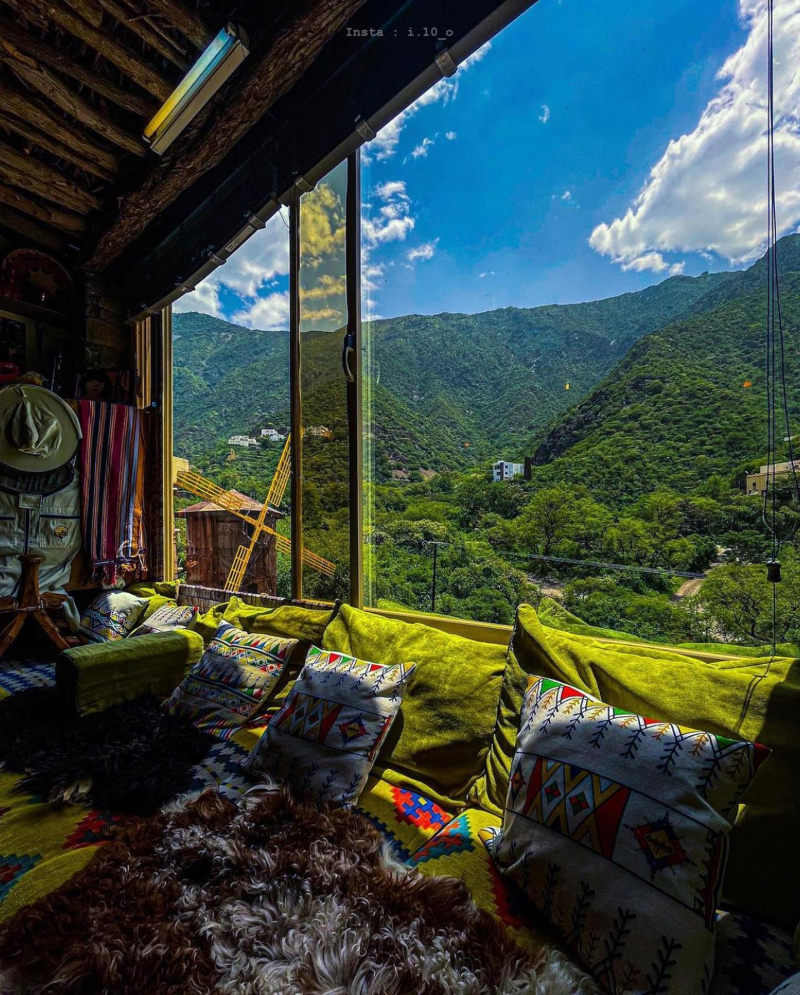
https://www.instagram.com/welcomesaudi/ 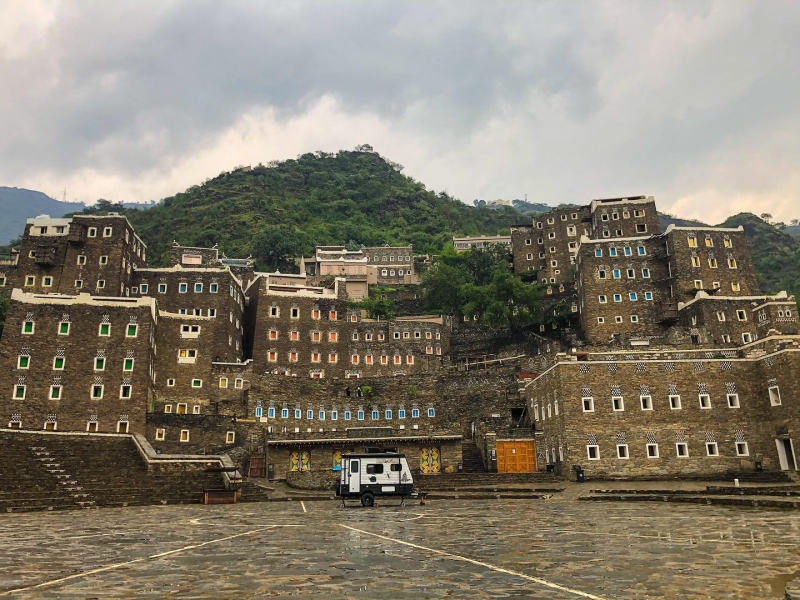
https://www.instagram.com/m_albuhayri/










